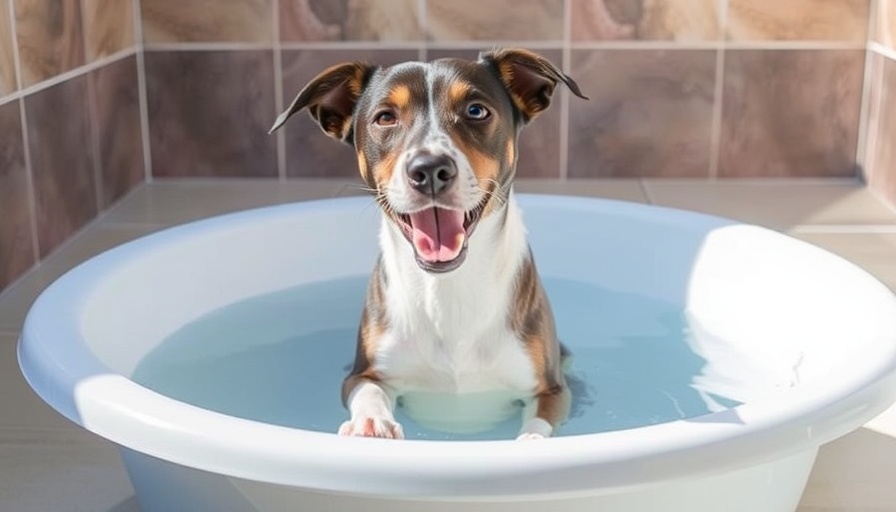
Making Bath Time Fun: Tips for Getting Your Dog Comfortable with Water
As dog owners, ensuring the well-being of our furry friends is paramount, especially when it comes to bathing them. Bath time can turn into a wrestling match with water splashing everywhere if your dog fears the tub or water itself. Here’s how you can make bath time a fun and enjoyable experience for both you and your pet.
Understanding Your Dog’s Fear of Water
Dogs, like humans, can have fears. Sounds, notably the rush of running water, slippery surfaces, or the closeness of the tub can trigger anxiety. Recognizing these triggers is the first step towards building your dog's comfort with water, transforming fear into a sense of security during baths.
Building Positive Associations with Bathing Areas
Start early. Puppies as young as eight weeks old can begin to associate positive experiences with the bathing area. Use soft, sweet-smelling treats and lots of praise to encourage exploration of the bathroom without the pressure of an actual bath. Invite them to sniff the tub and reward them for their bravery. By doing this regularly, you create a non-threatening environment that your dog can grow accustomed to.
Gradual Introduction to Water
Next, introduce water separately from the bath. A shallow bowl filled with lukewarm water can be the first step. Allow your dog to explore the water and, importantly, reward them for showing interest. Use a damp washcloth to occasionally touch their fur, again rewarding good behavior. This gradual desensitization method helps your dog develop a more positive view of water.
Techniques to Reduce Bath Time Anxiety
You are not alone if your dog's bath time resembles a scene from a comedy. It is common to see dogs wriggling away or cowering in a corner. To alleviate anxiety, try these steps:
- Desensitize your dog: Slowly introduce your dog to every aspect of washing, from entering the bathroom to eventually being wet. Provide treats along the way to motivate progress.
- Get gadgets: Invest in an extendable shower hose for easier rinsing. This aids in quicker and cleaner washes compared to traditional cups, which can be messy and frustrating for your dog.
- Use a non-slip mat: Having a stable surface in the tub helps reduce slip-related anxiety, allowing your dog to feel secure while you wash them.
The Role of Family in Bath Time
Involving all members of the family in the process of bathing the dog helps reinforce the idea that bath time is a shared responsibility. Not only does this strengthen the bond between the pet and family members, but it also helps your dog feel secure with different caregivers during the bath.
Maintaining Bath Time between Baths
This process must be ongoing. Bath time shouldn’t be remembered as a time of dread. Create routine conditions—consider giving treats before bath time, having them eat in the tub, or allowing play with water and safe toys. This consistency helps dogs remain relaxed, and they will look forward to the positive experiences associated with bath time.
Handling and Grooming Techniques
Grooming products may help ease the trouble of bath time as well. A gentle, pet-specific shampoo can be less irritating as you wash. Consider employing a washcloth to gently clean their face rather than dousing it, and use conditioner for added moisture - promoting better skin health.
Exploring Additional Aids
For dogs that still struggle with anxiety, calming products such as CBD treats can be helpful. The Happy Hounds CBD products provide a calming effect for many dogs during stressful situations. Consulting with your veterinarian can guide you through integrating these aids into your pet’s bathing routine.
Final Thoughts: Embrace Bath Time
Ultimately, successful bathing is about creating a positive experience through gradual exposure, praise, rewards, and patience. By employing these methods, you can turn bath time from a dreaded chore into a delightful bonding activity, fostering trust and comfort in your canine companion.
Remember: Every dog is unique. It may take time to find what works best for your pup, but patience pays off.
 Add Row
Add Row  Add
Add 




Write A Comment